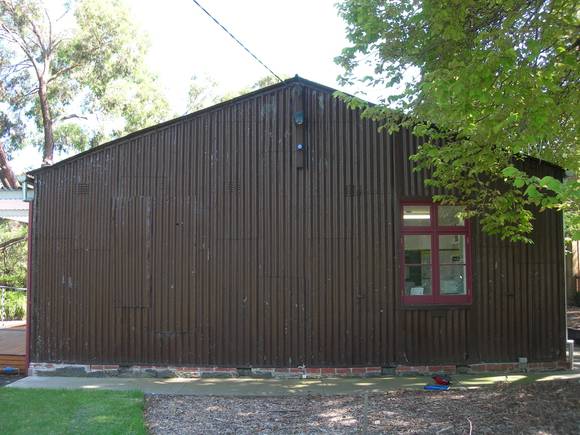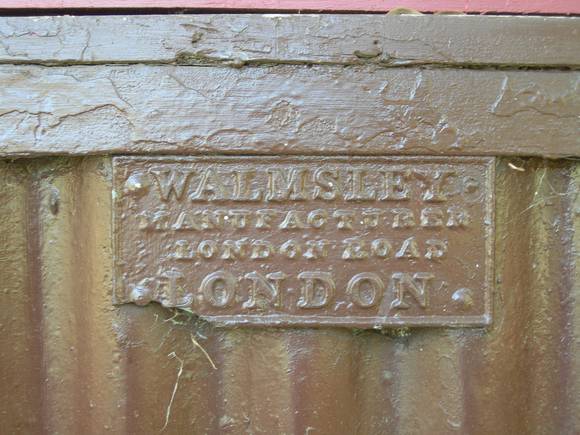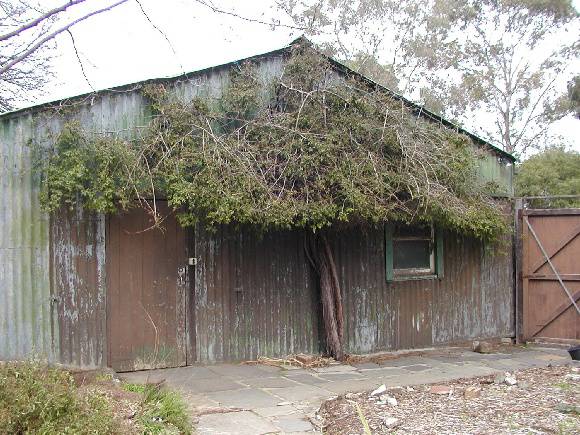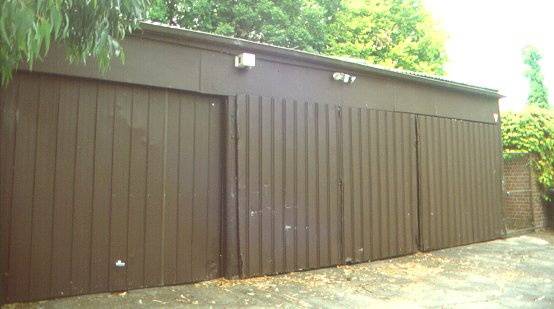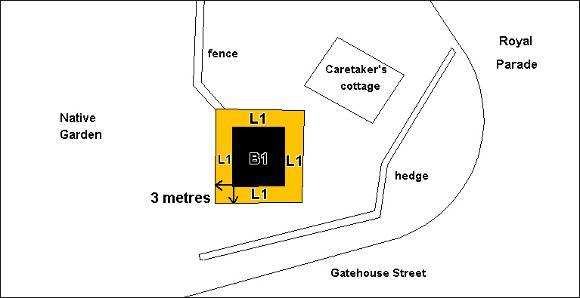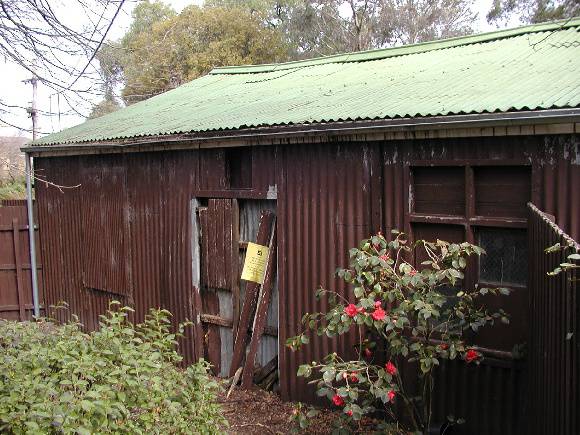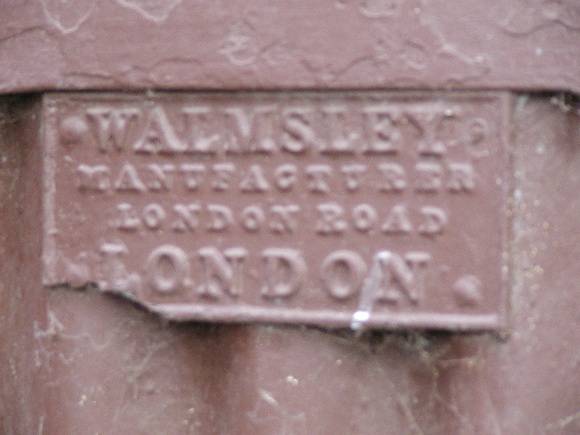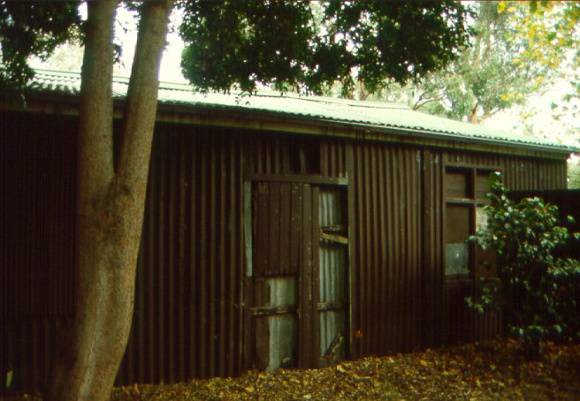| Back to search results » | Back to search page » |
|
WALMSLEY HOUSE
Other NameRANGER'S HOUSE LocationCNR ROYAL PARADE AND GATEHOUSE STREET AND 161 GATEHOUSE STREET, PARKVILLE, MELBOURNE CITY
File Numberpl-he/03/0874LevelRegistered |
|
Statement of Significance
What is significant?
Prefabricated iron houses were amongst the thousands of prefabricated iron and timber buildings imported to Victoria following the first gold rushes of 1851. Prefabricated buildings overcame the problem of scarce and expensive labour in the colony. Not only houses, but warehouses, shops and churches were imported to Victoria.
The Walmsley House, located at an entrance to Royal Park, is a prefabricated iron house imported to Victoria by the colonial government in 1854. The dimensions, 32 feet x 28 feet (9.75m x 8.5m), and construction of this building is identical to that shown on a plan provided by the Colonial Architect, Henry Ginn, in 1853 for guidance in the erection of twelve iron houses at the Police Depot, Richmond. In 1852 Ginn had recommended to Lieutenant-Governor La Trobe that iron houses be imported for the use of public servants, and he provided a specification. In 1854 thirty-six iron houses arrived, ten of which were sent to the Police Depot at Richmond, with others known to have been erected for the Colonial Surgeon, the Registrar General and the Steam Navigation Board. The original location of the Walmsley House is not known.
The earliest reference to an iron building on this site is 1862, although it has been claimed that the Walmsley House was utilised at its current location prior to then as a barracks for mounted troopers in charge of gold escorts. In 1862 Frances Meaker became bailiff of Royal Park and occupied the house. In 1905 his son, Mr Charles Meaker, succeeded him in retirement. The Royal Park Trustees minutes record in 1871 that there were two iron cottages in the Park, both unbearably hot in the summer. The location of the second house is not known.
The house is constructed from a lightweight frame of 2 inches x 2 inches (51mm x 51mm) angle iron comprising top and bottom plates, corners, window and door jambs. The iron is joined on the bottom plate by gussett connections. It is clad with vertical corrugated iron sheets. Beneath a window on the south side is a rectangular nameplate bearing the manufacturer?s details, ?Walmsley, Manufacturer, London Road, London?. The east wall has a set of corrugated iron shutters. The gable roof is tied with two wrought-iron tie rods. None of the original interior has survived. The house was painted and this has removed evidence of markings used to assist joining the pieces together on site. The corrugated iron roof sheeting is unpainted on the inside but no markings have been found.
The Walmsley House is identical to the remains of another iron house at Inverliegh, which bears the nameplate of manufacturer John Walker of Millwall, London. The Inverleigh house has a full length verandah, which also shows on an 1890s plan of the Walmsley House, but has subsequently been removed. Walker was exporting buildings from 1849 and was almost certainly the contractor for the thirty-six houses that arrived in 1854. Given the identical details, it is likely that Walker must have subcontracted some of the government order to Walmsley.
How is it significant?
The Walmsley House is of architectural and historical significance to the State of Victoria.
Why is it significant?
The Walmsley House is architecturally significant as a rare surviving example of a prefabricated iron house. Several iron houses imported by migrants have survived including mansion sized buildings Corio Villa in Geelong and Tintern, Toorak. Three smaller cottage size residences by three different manufacturers survive in Coventry Street, South Melbourne, two of which have been relocated from other sites. Other prefabricated iron houses survive at Moe, Swan Hill and a two storey example at Yapeen. The Walmsley House is significant as one of the thirty-six buildings known to have been imported by the government for the use of public servants. It is one of only two buildings known to be by Walmsley, the other being an iron cottage located in the Royal Botanic Gardens.
The Walmsley House is historically significant as one of the earliest buildings in Royal Park. It is known to have been located at the corner of Gatehouse Street since 1862 and may have been there even earlier. It has functioned continuously as Royal Park rangers? accommodation or storage since 1862.
Group
Government and Administration
Category
Other - Government & Administration


